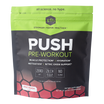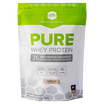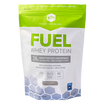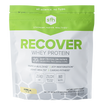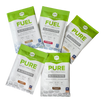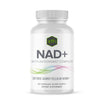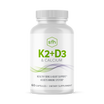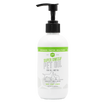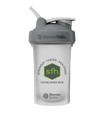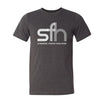What Is RPE Scale Training?
Not very motivated in the gym lately? Could your workouts use a little bit of spice?
If you want to take your workouts to the next level and maximize your gains, you may want to consider implementing the RPE scale into your training.
Not familiar with the RPE scale? Not to worry, that’s what we’re here for! Let’s run down what the RPE scale is, the benefits of using it, and how to incorporate it into your strength training routine. Also, at the end of the post, we’ll provide you with a sample workout using the RPE scale!
What Is the RPE Scale and How Is It Used?
RPE stands for rate of perceived exertion. Sometimes it’s referred to as the Borg scale, but basically, RPE is an indicator of the intensity of your workout. Or, to put it another way, RPE is a way to gauge how hard you're pushing yourself during exercise. The RPE scale goes from 1-10, with 1 being lifts where essentially zero effort is involved while 10 means you’re going all out, giving it everything you have, and making extremely ugly workout faces while you struggle to get the weight up.
How to Measure RPE
- 10 — This is your absolute limit. When you get done with a lifting set of an RPE 10, it leaves you questioning how you even managed to get the weight up.
- 9 — You might have another rep in you but it’ll be tough.
- 8 — The weight is still very challenging but you have a solid 2 reps or so left in the tank.
- 7 — You still have to push yourself and focus to get the weight up but it won’t absolutely wreck you.
- 6 — You’re able to push the weight fairly easily but it’s still heavier than a warm-up set.
- 5 — This is essentially your warm-up weight.
Anything below a 5 on the RPE scale can be considered lighter weight used for range of motion work, rehabilitation, or when you want to concentrate strictly on proper form.
Why Use the RPE Scale in Your Training?
It can be pretty discouraging when you focus on hitting a certain number and then fail to get the weight up. But applying the RPE scale puts you in the driver’s seat with your training. One of the main benefits of the RPE scale is that it allows you to get a better feel for the weights and train for intensity as opposed to a specific weight, such as 75% of your 1 rep max.
You may have heard of progressive overload, which is when you gradually increase the weight as you get stronger. The cool thing is that progressive overload is a built-in component of any RPE scale training. By focusing on the intensity of your lifts, you’ll naturally get stronger and lift more weight over time.
The RPE scale is also a good way to keep track of how you’re progressing in your strength training journey. When you start using the RPE scale, you’ll get a baseline for your fitness level. Over time, as you build yourself up to working out at higher RPE levels, you’ll eventually get to the point where lifts that were once a high RPE are now on the lower end of your RPE scale.
For example, let’s say 3 sets of 8 reps at 135 pounds on bench press is an RPE of 7 for you. By continuing to work hard and track your progress on the RPE scale, those same 3 sets of 8 reps at 135 pounds will end up being an RPE of 5 to you down the line.
- Week 1: 3 sets x 8 reps → 135 pounds at an RPE 8
- Week 2: 3 sets x 8 reps → 135 pounds at an RPE 8
- Week 3: 3 sets x 8 reps → 135 pounds at an RPE 8
- Week 4: 3 sets x 8 reps → 140 pounds at an RPE 8
As you can see from the example above, once 135 pounds at an RPE 8 starts feeling too light for you, you know it’s time to increase the weight so you can continue to challenge yourself.
Total Body RPE Scale Sample Training Routine
Ready to put RPE scale training into practice? Here’s a total-body, 3-day-a-week RPE scale workout for you to try. This one’s great for building muscle, or if your goal is to lose fat, for preserving the muscle you already have. Print this workout schedule, take it to the gym with you, and make sure you record your progress over time!
For example, let’s say 3 sets of 8 reps at 135 pounds on bench press is an RPE of 7 for you. By continuing to work hard and track your progress on the RPE scale, those same 3 sets of 8 reps at 135 pounds will end up being an RPE of 5 to you down the line.
- Day 1:
Barbell squat: 3 sets x 8 reps — RPE 8-9
Dumbbell incline bench: 3 sets x 10-12 reps — RPE 8-9
Chin-ups: 3 sets x 5-10 — RPE 8-9
Leg curl: 3 sets x 12-15 — RPE 7-8 - Day 2:
Barbell Deadlift: 3 sets x 8 reps — RPE 8-9
Dumbbell shoulder press 3 sets x 10-12 reps — RPE 8-9
Single arm dumbbell back row (each arm) 3 sets x 8-10 — RPE 8
Leg extension 3 sets x 12-15 — RPE 7-8 - Day 3:
Barbell bench press 3 sets x 8 reps — RPE 8-9
Dumbbell Forward lunges (each leg) 3 sets x 8-10 — RPE 8
Pull-ups 3 sets x 5-10 — RPE 8-9
Calf raises 3 sets x 12-15 reps — RPE 7-8
As you can see from the example above, once 135 pounds at an RPE 8 starts feeling too light for you, you know it’s time to increase the weight so you can continue to challenge yourself.
Give RPE Scale Training a Try
The RPE scale allows you to focus on the intensity of your lifts as opposed to hitting a certain weight. And progressive overload (the key to getting stronger over time) is naturally built into RPE scale training.
If you’ve been stuck in a plateau for a little bit, have been feeling so-so about your training lately, or just want to switch things up, give RPE training a try!
Meet the Author

Chad Richardson is a freelance copywriter from Cincinnati, OH. When he's not behind his computer, you can find Chad at the gym pretending to be Arnold Schwarzenegger, searching for new recipes on Instagram, or at home watching his hometown Redlegs struggle for yet another season.


